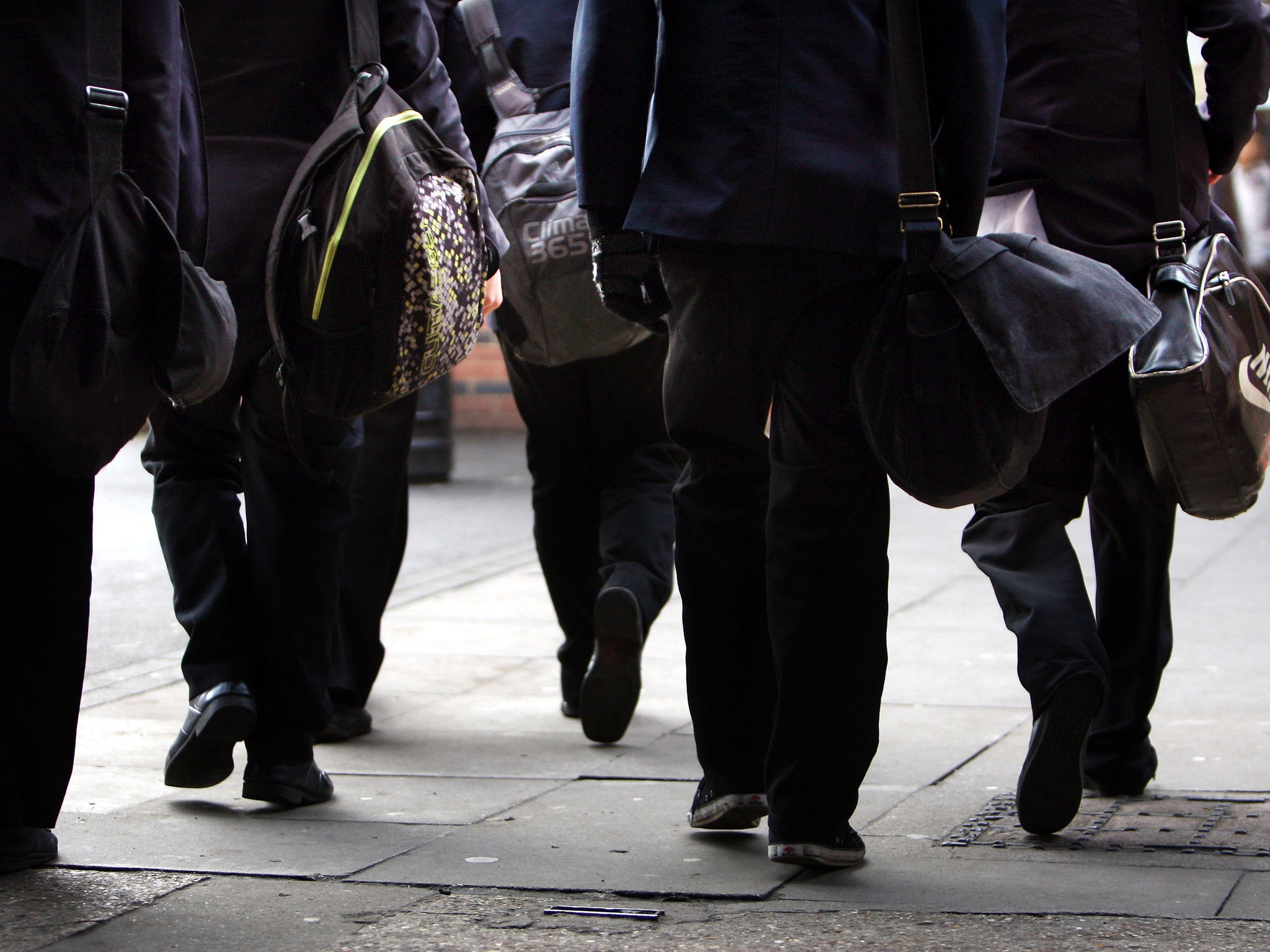National Offer Day: Unprecedented squeeze on places forcing poorest children into lowest-rated schools, analysis shows
The widening gap between poor and rich children is ‘deeply concerning’, says charity

Your support helps us to tell the story
From reproductive rights to climate change to Big Tech, The Independent is on the ground when the story is developing. Whether it's investigating the financials of Elon Musk's pro-Trump PAC or producing our latest documentary, 'The A Word', which shines a light on the American women fighting for reproductive rights, we know how important it is to parse out the facts from the messaging.
At such a critical moment in US history, we need reporters on the ground. Your donation allows us to keep sending journalists to speak to both sides of the story.
The Independent is trusted by Americans across the entire political spectrum. And unlike many other quality news outlets, we choose not to lock Americans out of our reporting and analysis with paywalls. We believe quality journalism should be available to everyone, paid for by those who can afford it.
Your support makes all the difference.Children from the poorest backgrounds are more likely to attend a secondary school rated below “good” by Ofsted than in 2016, new analysis suggests.
More than a third (35 per cent) of children from the poorest postcodes currently attend a school rated “inadequate” or “requires improvement” – a rise from 28 per cent three years ago, the report from Teach First. This amounts to an additional 30,000 children.
A shortage of high-quality teachers and “good”- and “outstanding”-rated schools in the most deprived areas of the country has widened the gap between rich and poor pupils, the charity says.
Meanwhile, a headteachers’ union suggests rising house prices near top-rated schools could be pricing out poorer families.
It comes as tens of thousands of parents were finding out which secondary school their child is to attend on National Offer Day.
Experts have warned a record number of children will be turned away from their first-choice secondary school this year, with some 115,000 pupils predicted to miss out.
Teach First’s figures show only 8 per cent of young people from the wealthiest postcodes currently attend a school rated as less than “good”, which remains unchanged in recent years.
The growing gap between children from the richest and poorest families is also seen at “outstanding” schools, where only 17 per cent of children from the poorest backgrounds attend, compared to 44 per cent of children from the richest backgrounds.
Russell Hobby, CEO of Teach First, said: “It is deeply concerning that in recent years we’ve seen an increase in young people attending schools rated as less than good – and it’s those from the poorest background that have been hit the hardest.”
Mr Hobby has called for greater investment to ensure every child has access to an “outstanding” education.
Geoff Barton, general secretary of the Association of School and College Leaders, said: “We know that middle-class families tend to move into areas served by schools which are rated by Ofsted as ‘outstanding’ and ‘good’ and over time this pattern is likely to become more entrenched as house prices rise accordingly and become prohibitively expensive for disadvantaged families.”
He added: “The solution is to ensure that all communities are served by good schools. However, the problem with negative Ofsted judgements is that they stigmatise schools making it more difficult for them to improve.
“What these schools need is targeted support and an inspection system which is less stark.”
Nick Gibb, school standards minister, said: “This government is determined to create more choice for parents when it comes to their children’s education and we have created 825,000 school places since 2010, and are on track to see that number rise to a million by 2020.
“Standards have also risen, with 86 per cent of schools now good or outstanding, compared to 68 per cent in 2010, and last year more than nine out of ten pupils got a place at one of their top three choices, setting them on the path for a successful future.”
Join our commenting forum
Join thought-provoking conversations, follow other Independent readers and see their replies
0Comments